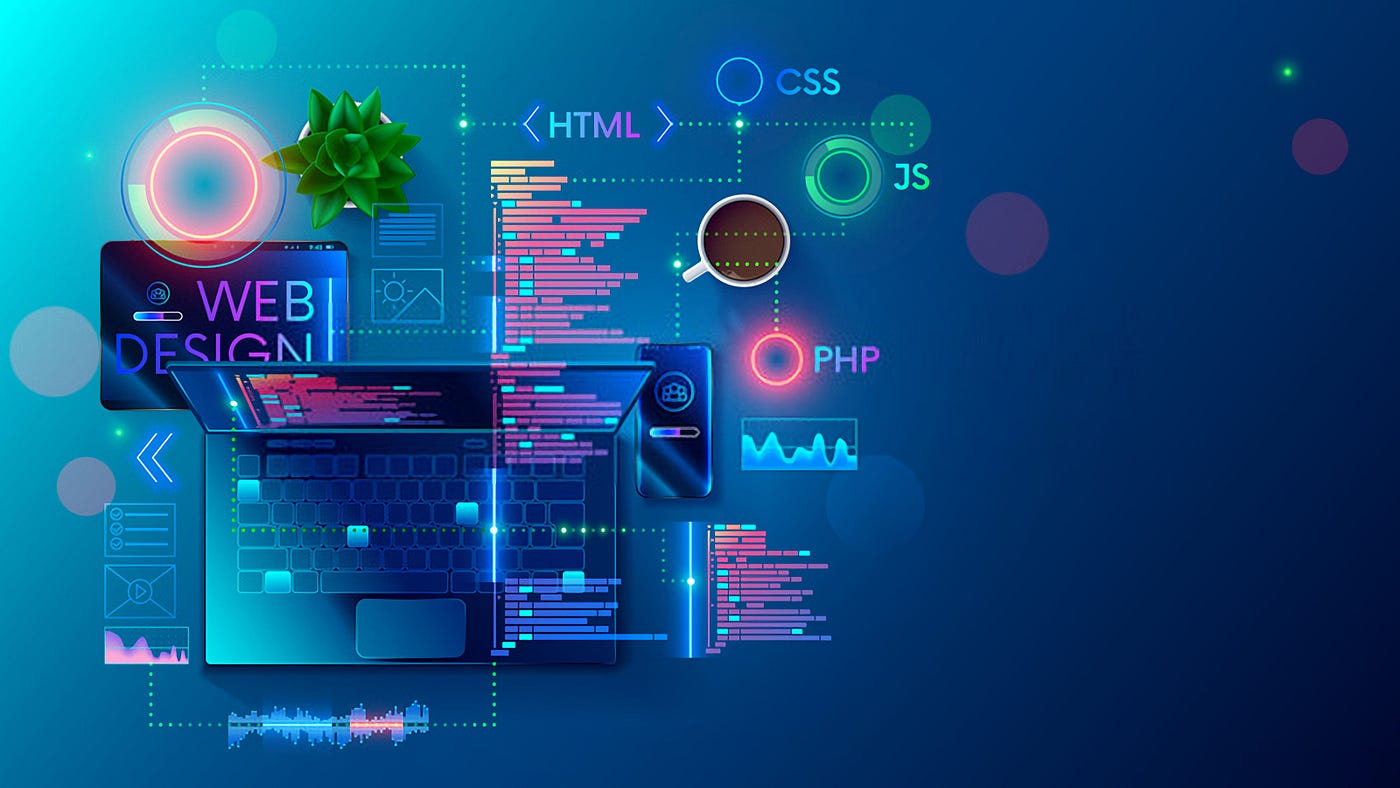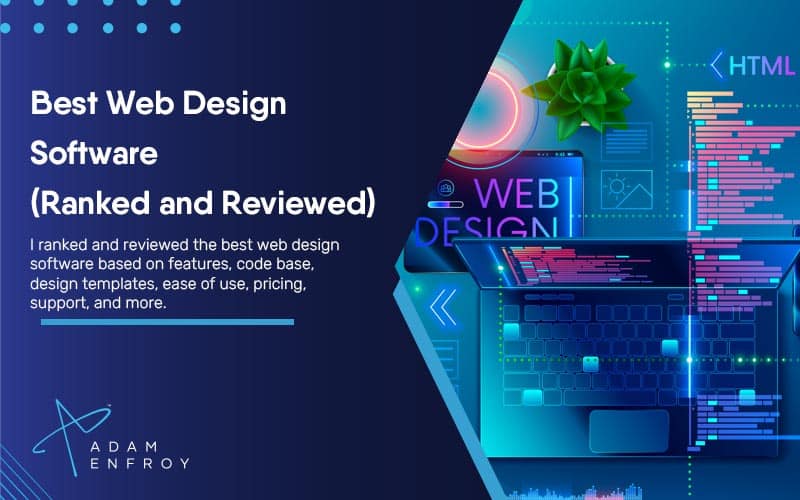All Categories
Featured
Table of Contents
- – Web Design - Website Design Tutorials, Article...
- – Web Design Courses & Tutorials - Codecademy T...
- – The Top 10 Most Important Elements Of A Websi...
- – Custom Web Design, Development & Digital Mark...
- – Chavez Web Design: Web Design San Diego - Bak...
- – What Is Web Design, How To Do It Right And Be...
- – 10 Principles Of Good Web Design - Smashing ...
- – Web Design And Development - Invision Tips a...
- – Web Design Company In Orlando, Florida And B...
- – What Is Web Design (And How Do I Get It Righ...
- – Web Design Studio & Digital Marketing Agency...
Web Design - Website Design Tutorials, Articles And Free Stuff Tips and Tricks:
Quick summary Functionality and the energy, not the visual design, figure out the success or failure of a website. Because the visitor of the page is the only person who clicks the mouse and for that reason decides whatever, user-centric style has actually developed as a basic method for effective and profit-oriented web design - web design frederick md.
and the energy, not the visual style, determine the success or failure of a site. Given that the visitor of the page is the only individual who clicks the mouse and therefore chooses whatever, user-centric style has actually become a standard technique for effective and profit-oriented website design. After all, if users can't use a feature, it might as well not exist.
g. where the search box need to be put) as it has currently been performed in a number of short articles; rather we concentrate on the techniques which, utilized appropriately, can result in more sophisticated design decisions and simplify the procedure of viewing presented details. Please see that you may be thinking about the usability-related short articles we've released before: Principles Of Great Site Design And Effective Web Design Guidelines, In order to utilize the principles appropriately we initially require to comprehend how users connect with websites, how they think and what are the standard patterns of users' habits.
Web Design Courses & Tutorials - Codecademy Tips and Tricks:
Visitors glimpse at each brand-new page, scan a few of the text, and click on the first link that captures their interest or vaguely resembles the thing they're looking for. There are big parts of the page they don't even look at. A lot of users browse for something fascinating (or helpful) and clickable; as quickly as some promising candidates are discovered, users click.
If a page provides users with high-quality material, they are willing to jeopardize the content with advertisements and the style of the site. This is the factor why not-that-well-designed sites with high-quality material acquire a great deal of traffic over years. Material is more crucial than the style which supports it.

Users don't read, they scan. Notice how "hot" areas abrupt in the middle of sentences. This is normal for the scanning process. Really simple principle: If a website isn't able to fulfill users' expectations, then designer stopped working to get his job done appropriately and the business loses money. The higher is the cognitive load and the less instinctive is the navigation, the more willing are users to leave the website and search for options.
The Top 10 Most Important Elements Of A Website Design Tips and Tricks:
Neither do they scan webpage in a direct style, going sequentially from one website section to another one. Rather users satisfice; they select the first sensible alternative. As quickly as they find a link that appears like it might cause the goal, there is a great opportunity that it will be instantly clicked.
It does not matter to us if we comprehend how things work, as long as we can use them. If your audience is going to imitate you're designing signboard, then design terrific signboards." Users want to be able to control their web browser and count on the constant information presentation throughout the site.
If the navigation and site architecture aren't intuitive, the number of enigma grows and makes it harder for users to comprehend how the system works and how to get from point A to point B. A clear structure, moderate visual clues and quickly recognizable links can assist users to find their path to their objective.
Custom Web Design, Development & Digital Marketing ... Tips and Tricks:

Since users tend to check out sites according to the "F"-pattern, these three declarations would be the first components users will see on the page once it is packed. The design itself is simple and instinctive, to comprehend what the page is about the user needs to browse for the answer.
When you have actually accomplished this, you can communicate why the system is helpful and how users can benefit from it. Don't Waste Users' Perseverance, In every job when you are going to use your visitors some service or tool, attempt to keep your user requirements minimal.
First-time visitors are willing to, not filling long web types for an account they may never utilize in the future. Let users check out the website and find your services without requiring them into sharing personal information. It's not affordable to require users to go into an e-mail address to evaluate the function.
Chavez Web Design: Web Design San Diego - Bakersfield ... Tips and Tricks:
And that's what you desire your users to feel on your web website. The registration can be done in less than 30 seconds as the kind has horizontal orientation, the user doesn't even require to scroll the page.
A user registration alone suffices of an impediment to user navigation to cut down on incoming traffic. 3. Handle To Focus Users' Attention, As sites supply both static and vibrant material, some aspects of the user interface attract attention more than others do. Certainly, images are more eye-catching than the text just as the sentences marked as vibrant are more attractive than plain text.
Focusing users' attention to specific areas of the website with a moderate usage of visual aspects can help your visitors to receive from point A to point B without thinking of how it really is expected to be done. The less enigma visitors have, the they have and the more trust they can develop towards the company the website represents.
What Is Web Design, How To Do It Right And Best Skills - Rock ... Tips and Tricks:
Strive For Feature Exposure, Modern web designs are generally criticized due to their method of directing users with visually appealing 1-2-3-done-steps, big buttons with visual results etc. From the style perspective these elements really aren't a bad thing.
The website has 9 main navigation alternatives which are noticeable at the very first look. The choice of colors may be too light. is a fundamental concept of successful user interface design. It does not actually matter how this is achieved. What matters is that the material is well-understood and visitors feel comfortable with the way they communicate with the system.
com gets straight to the point. No charming words, no overemphasized declarations. Instead a rate: just what visitors are trying to find. An ideal service for reliable writing is touse brief and succinct phrases (come to the point as quickly as possible), use scannable layout (categorize the content, utilize several heading levels, use visual aspects and bulleted lists which break the flow of consistent text blocks), usage plain and objective language (a promotion doesn't need to seem like ad; offer your users some reasonable and unbiased reason that they must use your service or remain on your site)6.
10 Principles Of Good Web Design - Smashing Magazine Tips and Tricks:
Users are seldom on a website to delight in the design; furthermore, in many cases they are looking for the information in spite of the design - web design frederick md. Pursue simplicity rather of complexity. From the visitors' viewpoint, the very best website design is a pure text, without any ads or more content blocks matching precisely the question visitors utilized or the content they have actually been looking for.
Finch clearly provides the information about the website and provides visitors an option of options without overcrowding them with unneeded content. Not only does it help to for the visitors, but it makes it possible to view the details provided on the screen.
Complex structures are more difficult to read, scan, examine and work with. If you have the choice between separating 2 design sectors by a noticeable line or by some whitespace, it's generally much better to utilize the whitespace solution. (Simon's Law): the better you handle to offer users with a sense of visual hierarchy, the easier your material will be to perceive.
Web Design And Development - Invision Tips and Tricks:
The very same conventions and rules need to be used to all elements.: do the most with the least quantity of cues and visual components. Four major points to be considered: simplicity, clearness, diversity, and focus. Simplicity consists of only the aspects that are most essential for communication. Clarity: all elements ought to be created so their meaning is not uncertain.
Conventions Are Our Good friends, Conventional style of site elements doesn't result in an uninteresting web site. As they minimize the discovering curve, the requirement to figure out how things work. It would be a functionality headache if all sites had different visual discussion of RSS-feeds. That's not that different from our routine life where we tend to get used to fundamental concepts of how we arrange data (folders) or do shopping (positioning of products).
comprehend what they're expecting from a website navigation, text structure, search positioning etc. A typical example from functionality sessions is to translate the page in Japanese (assuming your web users do not know Japanese, e. g. with Babelfish) and provide your functionality testers with a task to find something in the page of various language.
Web Design Company In Orlando, Florida And Bangor, Maine Tips and Tricks:
Steve Krug recommends that it's much better to, however benefit from conventions when you don't. 10. Test Early, Test Frequently, This so-called TETO-principle needs to be applied to every web design project as use tests frequently offer into significant issues and problems related to a given design. Test not far too late, not insufficient and not for the incorrect factors.
Some essential indicate keep in mind: according to Steve Krug, and screening one user early in the job is much better than testing 50 near the end. Accoring to Boehm's first law, errors are most regular during requirements and style activities and are the more expensive the later they are removed.
That implies that you create something, test it, fix it and after that test it again. There might be problems which have not been discovered during the very first round as users were virtually blocked by other issues. usability tests. Either you'll be pointed to the problems you have or you'll be pointed to the lack of major style flaws which is in both cases a helpful insight for your task.
What Is Web Design (And How Do I Get It Right)? - 99designs Tips and Tricks:

This holds for designers. After you have actually dealt with a website for couple of weeks, you can't observe it from a fresh perspective any longer. You know how it is developed and therefore you know exactly how it works you have the knowledge independent testers and visitors of your site wouldn't have.
It can be linked to other locations such as graphic design, user experience, and multimedia arts, however is more aptly seen from a technological perspective. It has ended up being a big part of individuals's daily lives. It is tough to think of the Internet without animated graphics, various styles of typography, background, videos and music.

Throughout 1991 to 1993 the World Wide Web was born. Text-only pages could be viewed utilizing a basic line-mode web browser. There had actually been no integrated method to graphic design components such as images or sounds.
Web Design Studio & Digital Marketing Agency • Gravitate Tips and Tricks:
The W3C was created in October 1994 to "lead the World Wide Web to its complete potential by developing typical protocols that promote its evolution and ensure its interoperability." This dissuaded any one company from monopolizing a propriety internet browser and shows language, which might have modified the impact of the World Wide Web as a whole.
As this has actually happened the innovation of the web has actually also proceeded. There have likewise been significant changes in the method individuals utilize and access the web, and this has actually altered how websites are developed. Because the end of the browsers wars [] brand-new browsers have been released. Many of these are open source suggesting that they tend to have faster advancement and are more supportive of brand-new requirements.
Learn more about Lovell Media Group LLC or TrainACETable of Contents
- – Web Design - Website Design Tutorials, Article...
- – Web Design Courses & Tutorials - Codecademy T...
- – The Top 10 Most Important Elements Of A Websi...
- – Custom Web Design, Development & Digital Mark...
- – Chavez Web Design: Web Design San Diego - Bak...
- – What Is Web Design, How To Do It Right And Be...
- – 10 Principles Of Good Web Design - Smashing ...
- – Web Design And Development - Invision Tips a...
- – Web Design Company In Orlando, Florida And B...
- – What Is Web Design (And How Do I Get It Righ...
- – Web Design Studio & Digital Marketing Agency...
Latest Posts
Awwwards - Website Awards - Best Web Design Trends Tips and Tricks:
Website Design - Best Ecommerce Web Design By Shopify Tips and Tricks:
Web Design Shopify:
More
Latest Posts
Awwwards - Website Awards - Best Web Design Trends Tips and Tricks:
Website Design - Best Ecommerce Web Design By Shopify Tips and Tricks:
Web Design Shopify: